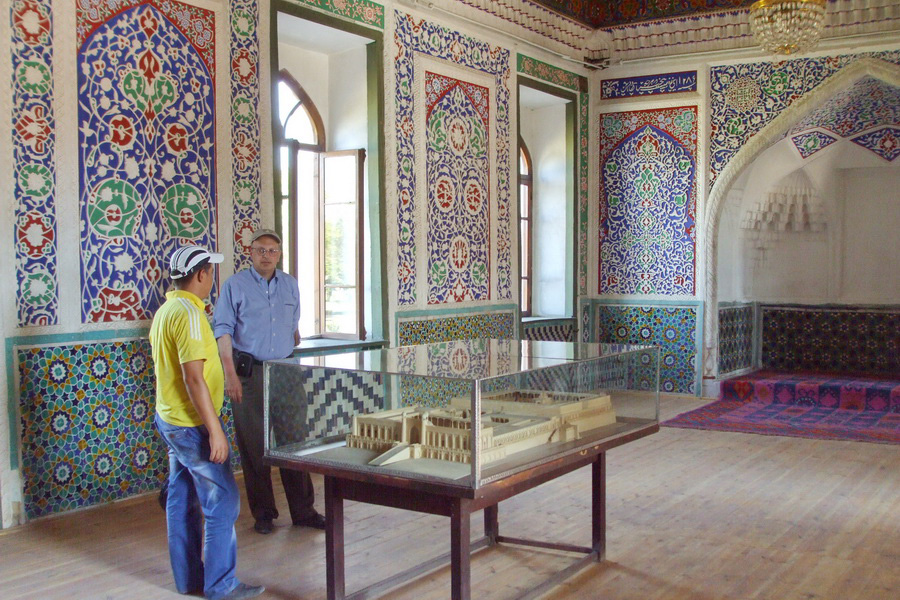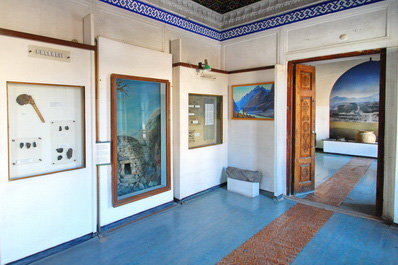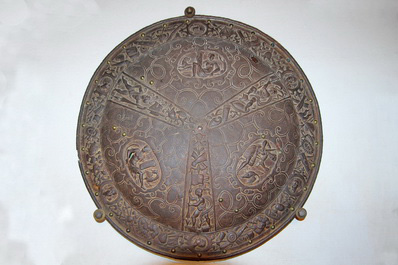Kokand Regional Studies Museum

Address: 2, Istiklol Str., Kokand city
Phone: (998-7355) 3-60-46, 2-68-39
Fax: (998-7355) 2-68-39
Е-mail: kokandmuseum@mail.ru
Working hours: 09:00 – 17:00
Day off: open every day
The Kokand Regional Studies Museum is one of the oldest museums in Uzbekistan. The museum was established in 1925 inside the former palace of the Kokand khan - Khudayarhan. The Urda complex ("Palace" in ancient Turkic language) is a monument of 19th century Uzbek architecture. It combines many types of traditional applied arts.
There are 6 departments in the museum:
- History Department
- Art Department
- Department of Modern History
- Department of Nature
- Department of Scientific - Educational Work
- Funding.
The regional studies museum includes 4 branches: The house museum of Khamza Khakimzada Niyaziy, the famous poet; Mukimi - hudjra (study room) museum; the house museum of K. Haydarov, and the Djami - architectural complex.
More than 30,000 exhibits involving Kokand's historical heritage are preserved in the museum archives. The museum section of traditional art demonstrates that Kokand was the center of craftsmanship during the reign of the Kokand Khans.
The exhibits provide the opportunity to follow the path from early pottery works up to the wonderful porcelain transported via the Great Silk Road. The collection of numismatics includes coins from the reign of the Samanids and Karahanids to the coins of the Kokand Khanate. The picture gallery displays 20th century fine art painting and sculpture from Western Europe, Russia and Uzbekistan.
Since the 17th century Kokand has been famous for its manufacture of silk paper. The manuscripts and inscriptions of Kokand calligraphers were highly appreciated worldwide and delivered to many countries. In the calligraphy archive of the museum you can see Holy Korans edited in various years, as well as books on philosophy and logic, history and the natural sciences. Khudayarkhan's private Koran, his personal seals and archive documents - orders, amendments, instructions and letters are represented in the museum.
Museum collaborators try to enrich the museum collection by amassing interesting information and exhibits: Kokand khanate history, Kokand under the Russian empire, the political repression of the 1930s in Kokand, urban makhalla (literally means big street area), vegetative and animal life of the Kokand oasis, cultural life in the 20th century in Kokand, urban makhalla (literary means big street area), vegetative and animal life of Kokand oasis, cultural life in the 19-20th centuries, and Kokand after independence.
Seventy thousand visitors, including travelers, students and schoolchildren, visit the museum and its branches annually. The museum is the center of Kokand cultural life. Exhibitions, conferences, seminars, theme parties, meetings with famous people, competitions and festivals are held thanks to the museum's relations with various public organizations and educational institutions.
Khudayarhan Palace attracts travelers and visitors with its beautiful architectural structure. The palace was raised to display the strength and power of the Kokand Khans. Thanks to the brilliant facade, the palace can be seen from far away. The richness of the applied ceramic engineering is amazing. Calligraphic inscriptions in Arabian script are inlaid on background. A large part of the external facade and ornamental internal premises of the palace are inlaid with glazed tiles with plant patterns and remarkable woodcarving.
The courtyard and the museum's exhibitions immerse the visitor with local history, masterpieces of Uzbek art, and a feeling of respect for the city and its people.
Info used from www.museum.dinosoft.uz



